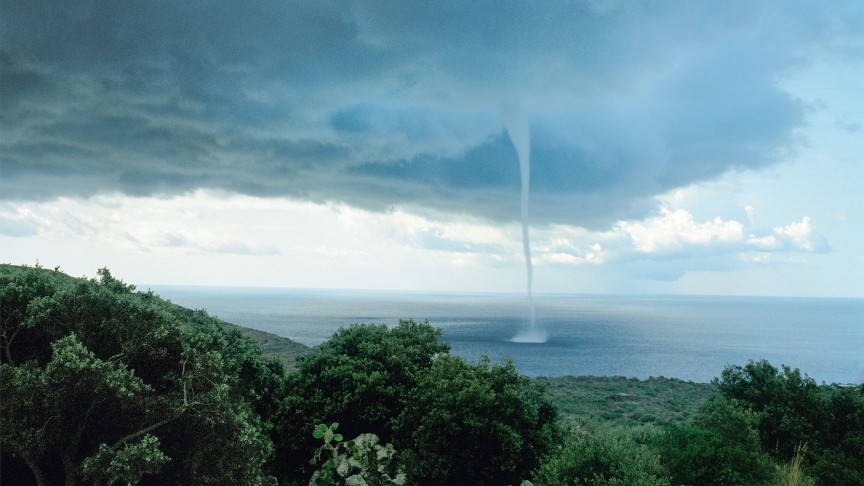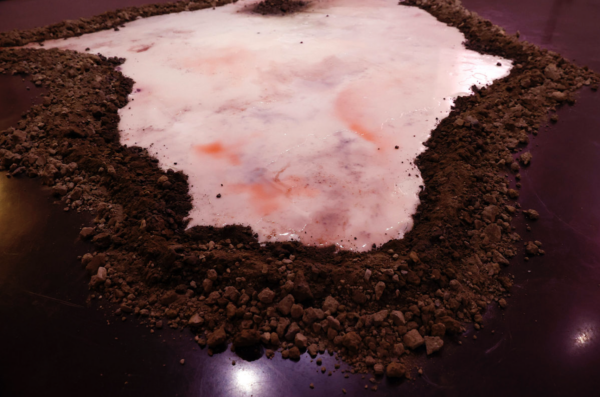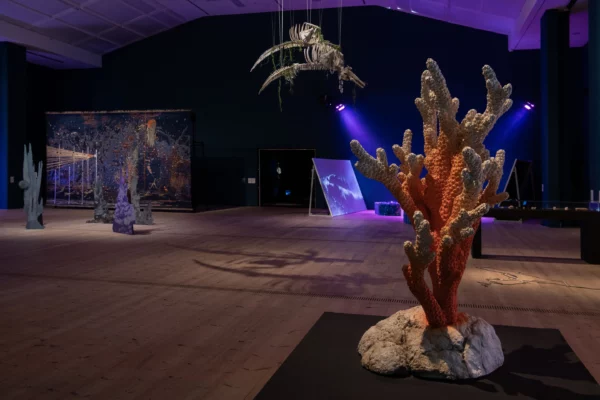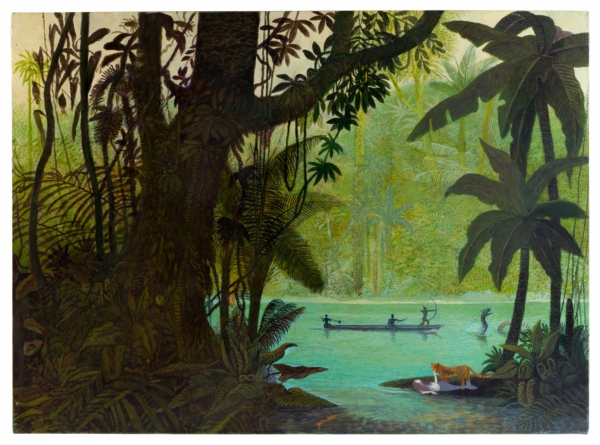
The Earth, the Fire, the Water, and the Winds – CARA
le Center for Art, Research and Alliances (CARA) à New York présente The Earth, the Fire, the Water, and the…
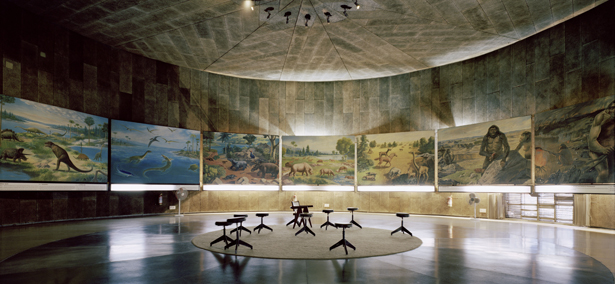
Crédit image : Anthropocene Observatory: Armin Linke, Museum of Evolution of Life, Chandigarh, India, 2014. © Armin Linke.
Following The Whole Earth and Forensis, Haus der Kulturen der Welt concludes the Anthropocene Project by presenting three exhibitions that have been developed over its two-year course. Adam Avikainen shows the installation CSI Department of Natural Resources, The Otolith Group mounts the film installation Medium Earth as well as a further piece, and Anthropocene Observatory shows a comprehensive survey of the overall project under the title #4: The Dark Abyss of Time.
Over the past two years, the Anthropocene Observatory, a project by Armin Linke, Territorial Agency (John Palmesino and Ann-Sofi Rönnskog), and Anselm Franke, has traced the emergence and impact of the Anthropocene thesis in terms of its concrete effects on international political and scientific institutions, setting these changes in relation to the transformations of actual space and territories in the present and past. It examines how the thesis of a human-made geologic age is debated and applied in scientific and political institutions and across national borders, especially (but not exclusively) in the field of environmental policy. The project acts as an observatory that collects, produces, and analyzes materials with the purpose of reconstructing complex interrelationships and posing questions about the adequacy of existing institutions and conceptions of order. In the past two years, visits have been made to more than 50 institutions around the world and numerous interviews conducted with international leading scientists and politicians, as well as with activists and analysts.
The fourth and last presentation of the Anthropocene Observatory at HKW takes its title from a book on the history of science, The Dark Abyss of Time by Paolo Rossi. In it, the author reconstructs for the first time the history of geology as a science, beginning with the discovery of geological time in the 18th century, and traces its connection with political history. This juxtaposition of the history of the Earth and political history is further developed in the exhibition: the Anthropocene is understood as an epoch in which human-made « world-systems » (as described by Immanuel Wallerstein) are impacting and intermeshing with our planet, which science in recent decades has sought to grasp as a complex « Earth system. »
Episode #4 of the Anthropocene Observatory tracks the increasing interlocking of the modern, capitalist world-system with the planetary Earth system by reference to resource utilization and the historically changing energy sources which accompany respective models of political order and forms of spatial organization—from city-states dependent on wood to the imperial order of fossil fuels and international institutions associated with nuclear energy. The exhibition’s second part presents film documentations of international institutions and territories whose current challenges serve as examples of the future interconnection of human and natural history, as epitomized by climate change. This part of the exhibition deals with the interleaving of science and models of authority, resource management and the settlement of land, the limitations of international law, and today’s omnipresent questions of the management, simulation, and modeling of complex processes. At the interface of politics and science in the Anthropocene stands the ambiguously multilayered, yet ubiquitous question: can we control the Earth?
As a painter and writer, Adam Avikainen explores ways in which artistic processes can merge with forensic sensibilities and science. It is in this role that he initiated a number of investigative examinations within the environs of the HKW over recent months with the aim of uncovering how nature and culture inscribe themselves in the environment. « In this case the landscape is the canvas, which is subjected to a variety of layering processes. On the one side it is processed by the sun, wind and rain, with traces from the Earth and nature becoming deposited upon it. On the other side, Avikainen reworked these ‘natural’ layers using synthetic paints in the HKW’s studio gallery. This results in landscapes in which his inner life, his vision, become fused with natural processes—post-apocalyptic scenarios, glimpses of the present from a world after the Anthropocene, represented by solar energy, wind, microbes, bacteria and synthetic materials. »
–Bernd Scherer in A Report on a Two-Year Endeavor, HKW, 2014
« Adam imagines the possibility of a natural pathogen or mutagen: for a while now he has been researching the natural properties of plants and rhizomes as a way of securing a future for our species…The pigments’ molecules on the scrolls mimic the landscape: valleys, volcanoes, gulfs, creeks, as in a topographic map. The large-scale paintings are like organic beings, they whisper to us their story and at the same time they expose the viewer to the mutagen. »
–Excerpts from the exhibition text for Rambler’s Association at Artspace, Auckland, April 2012, by Caterina Riva
Medium Earth (2013), by the London-based artist-led collective The Otolith Group and its members Anjalika Sagar and Kodwo Eshun, is an audiovisual essay on the millennial time of geology, the earthquake-endangered geology of California as well as the unconscious of capitalist modernity. The film listens to the Californian deserts, translates the writing of its stones, and deciphers the calligraphies of its expansion cracks. Who does the earth think it is (2014) consists of unsolicited earthquake predictions sent by members of the public to the United States Geological Survey Pasadena Field Office between 1993 and 2007. Kodwo Eshun: « Confronted by the remote sensing technologies that measure the dynamic behavior of plate tectonics, earthquake sensitives offer a hyperbolic case study of the encounter with the Promethean implications of global data. The sensitives neither clarify nor complicate; instead, they close the gap between expert and popular knowledge through a form of magical thinking distinct from the familiar forms of climate change denialism. They are devotees of a new geopiety that sincerely believe that they suffer the pains of the Earth. »
All three exhibitions are curated by Anselm Franke.
The Anthropocene Project is an initiative of Haus der Kulturen der Welt in cooperation with the Max-Planck-Gesellschaft; Deutsches Museum; the Rachel Carson Center for Environment and Society, Munich; and the Institute for Advanced Sustainability Studies, Potsdam. Haus der Kulturen der Welt is supported by the Federal Government Commissioner for Culture and the Media as well as by the Federal Foreign Office.
Anthropocene Observatory: #4 The Dark Abyss of Time
Armin Linke, Territorial Agency (John Palmesino
and Ann-Sofi Rönnskog), and Anselm Franke
Adam Avikainen: CSI Department of Natural Resources
The Otolith Group: Medium Earth
October 17–December 8, 2014
Opening: October 16, 6pm
Haus der Kulturen der Welt
John-Foster-Dulles-Allee 10
10557 Berlin
Germany
Press contact
Anne Maier, Haus der Kulturen der Welt
T +49 (0) 30 39787 153/196 / anne.maier(at)hkw.de
le Center for Art, Research and Alliances (CARA) à New York présente The Earth, the Fire, the Water, and the…
élébrant dix ans d’une collaboration fructueuse avec le Musée de la Chasse et de la Nature, COAL, acteur pionnier et…
L’exposition For All At Last Return, au Baltic Centre for Contemporary Art, réunit un ensemble majeur d’artistes internationaux autour d’une…
